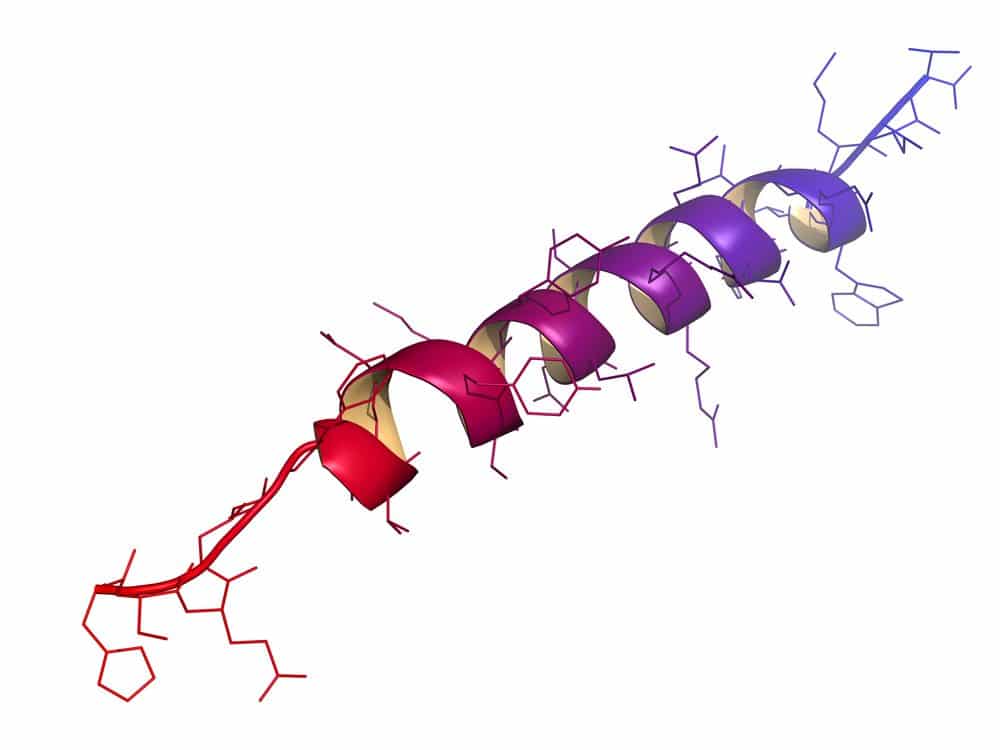tyle="text-align: center;">Mirror-Image Molecules Clear the Deck for More Durable Drugs
Proteins and peptides have a number of properties that make them highly effective as therapeutic agents. These include very precise specificity, high binding affinity, low toxicity, and low risk of drug–drug interactions. Their diversity also provides very broad coverage of disease targets.
Despite this, there are relatively few peptide drugs approved—around 60—compared with around 1,500 small molecule drugs- a major obstacle being- proteins and peptides are easily destroyed by proteases and, thus, typically have prohibitively short half-lives in human gut, plasma, and cells.
For reasons that are not fully understood and which go back to the origin of life, almost all amino acids in the natural world occur in one geometric form. Their atoms are arranged in such a way that makes the entire amino acid molecule appear left-handed, or “L” for short.
As a result, natural peptides are also left-handed. Because peptides produced by microbes, plants and animals can be harmful, the human body has evolved efficient ways to purge them.

Wrap your head around this brilliant plan- if we could, let’s say, find a way to rotate/inverse these molecules, not only would they be right-handed amino acids, which are also known as “D” for dextrorotary, they would additionally bind to the same receptors they did earlier while sliding unnoticed past the body’s defense mechanisms.
And this is exactly what a team the University of Toronto has been able to achieve using a purely computational approach.
The team, led by Philip Kim, a professor of computer science and molecular genetics in the Donnelly Centre for Cellular and Biomolecular Research, has developed a new technology for making mirror-image peptides, which bind and activate receptors on the surface of cells.
“Mirror image peptides are not recognized and degraded by enzymes in the stomach or bloodstream and therefore have a long-lasting effect,” says Kim. The other advantage, he said, is that mirror-image peptides also get overlooked by the immune system, which often mistakes natural peptides for foreign invaders and thus limits drug efficacy.
The study created mirror-image versions of existing drugs, which last longer in the body because they’re harder to digest. For patients, this would mean less frequent drug injections and more medicines could potentially be made available as pills.

The team was able to create these mirror molecules of two blockbuster drugs, a diabetes medication called glycogen-like-peptide 1 (GLP1) and the thyroid drug parathyroid hormone (PTH). And the results when analysed showed how these rotated forms had longer effects on cells than the existing version of these drugs.
In the study, the team started with the largest public database which contains structural information for three million helical peptides. They then created an algorithm to flip these peptides into their D versions. Finally, the team looked in this new virtual library of mirror-image peptides for those that best matched GLP1 and PTH.
They computationally generated a D version of every protein in the Protein Data Bank (PDB), creating the D-PDB, and extracted the D-proteins’ α-helices into more than 2.8 million separate database files. They then used known drug-target interactions to screen the helix database for D-helices with binding features positioned similarly to those of natural peptide and protein drugs. To create matches for drugs that bind in complex ways, the researchers made short D-strands by retroinversion and used the strands to link D-helices into three-part D-analogs.
Kim and coworkers used the method to create D-analogs for GLP-1, a diabetes and obesity treatment that targets the GLP-1 receptor, and parathyroid hormone, an osteoporosis medication that hits the parathyroid receptor. The D-analogs had about the same efficacy as their natural counterparts in cells, although the GLP-1 replacement required a higher dose. And the D-analogs withstood the cells’ proteases for longer than the natural peptides.
“We are now investigating whether the D-PTH could be orally delivered because it is avoiding breakdown in the stomach”, says Kim. “For frequently dosed medication, this is of great interest, as taking a pill is much easier than having an injection. This could lead to many more peptide drugs being taken as pills.”
Kim is currently working with the U of T patent office to protect his technology as he explores opportunities to partner with the pharmaceutical industry to commercialize the research. He is also developing mirror-image versions of peptides that work against the Dengue and Zika viruses in order to make them more durable in the bloodstream.
“We are testing our approach on as many interesting peptides as we can,” Kim said.



























